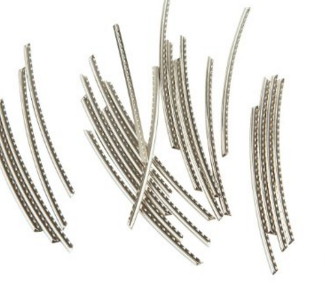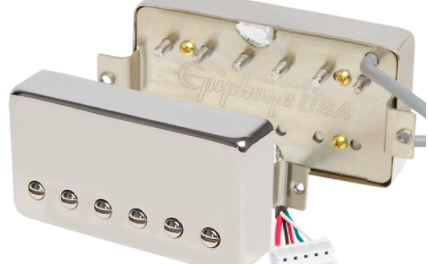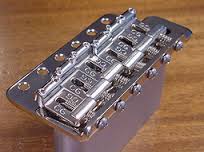I bought a Mighty Mite Strat Neck from StewMac. This is my review – it’s shit. I can return it, or refret it. I’m going to refret it.
I’ve read that Mighty Mite necks are hit and miss – some people get lucky, some don’t. Here’s what I can tell you – do not buy one of these necks if you plan on simply dropping it into your Strat. It will need work before it’s usable. But let’s stick to the BG review format, shall we?
The Good
The satin finish on the back of the neck feels nice, and the edges of the fretboard are already rounded a little bit. Nice touch on a budget neck. The truss rod works. I think the nut might be some type of decent graphite-type product, but I can’t tell and it wasn’t listed in the online description. The neck is straight and the shape is what it should be.
The Bad
Every fret end is sharp. Every single one. There are small dents in the first three frets, and there are more farther up. The frets are not very level. The frets are too small – they should have advertised this as having “vintage” frets, which have fallen out of favor with most modern players. The fretboard itself has one or two rough spots. As a “drop in” replacement neck, this is a piece of shit. It’s not up to the quality level of a Squier Bullet neck. I feel bad for anyone who buys one of these necks and puts it in their Strat.
The Ugly
If I were not into working on guitars, I’d send this back for a refund. It’s awful. But I can fix it. Step one will be to remove all of the too-small (and somewhat dented) frets. Step two will be to smooth out the one or two rough spots in the fretboard. And step three will be to refret using standard medium-jumbo Fender frets. Step four will be to do a little sanding on the back of the neck, because you can FEEL the edges of the skunk stripe. That’s not an uncommon thing – my MIM Telecaster had the same issue.
Seriously – if you want to buy a Strat neck, don’t buy a Mighty Mite. Buy an actual Fender Strat neck. They’re more money, but they’re not shit. If you’re into working on necks, though, this isn’t a bad place to start – the neck is straight and the truss rod works great. With a refret this neck will be just fine.
But in doing a refret on this neck, I came across another annoyance. The fretboard itself is thinner than a regular Fender neck. And the frets themselves had relatively small tangs, and the fret slots weren’t cut very deep. So I had to cut the fret slots deeper to accommodate regular Fender frets, which was a pain. The fretboard itself is about as deep as a regular Fender fret. This meant cutting right down to the neck to make the slots deep enough. I take it back – this IS a bad place to start learning how to refret a neck.
Maybe I just got a bad one, but for my money, it’s worth it to spend $200 on a Standard Fender neck made in Mexico. It’s a much, much better neck.





